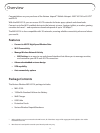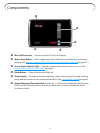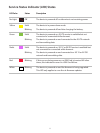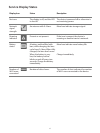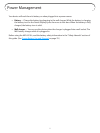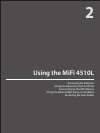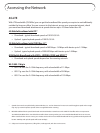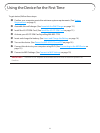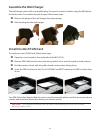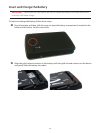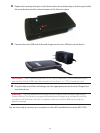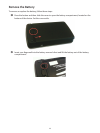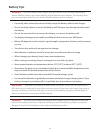
10
Accessing the Network
4G LTE
With LTE bandwidth (700 MHz) you can get the broadband-like speed you require to work eciently
outside the home or oce. You can connect to the Internet, access your corporate intranet, check
your email and download attachments at speeds that are up to 10 times faster than 3G.
4G Mobile Broadband with LTE*
• Download: typical download speeds of 100 DL/50 UL.
• Upload: typical upload speeds of 100 DL/50 UL.
3G Mobile Broadband with EVDO Rev. A**
• Download: typical download speeds of 600 kbps–1.4 Mbps with bursts up to 3.1 Mbps.
• Upload: typical upload speeds of 500-800 kbps with bursts up to 1.8 Mbps.
GSM Mobile Broadband with HSPA+, WCDMA, EDGE and GPRS***
• Download and upload speeds depend on the roaming network.
Wi-Fi 802.11b/g/n
• 802.11b uses the 2.4 GHz frequency with a bandwidth of 11 Mbps.
• 802.11g uses the 2.4 GHz frequency with a bandwidth of 54 Mbps.
• 802.11n uses the 2.4 GHz frequency with a bandwidth of 150 Mbps.
* Speeds shown are those published by Verizon Wireless, Inc. and are theoretical in nature. Actual throughput speed and coverage
may vary by network operator. Speed claims not applicable when roaming.
** Mobile Broadband Rev.A speed claim based on Verizon Wireless network tests with 5 MB FTP data les without compression.
Your Mobile Broadband Rev. A-enabled device will indicate coverage when you are in a Mobile Broadband Rev. A service area.
When outside the Rev. A service area, your wireless device will revert to Mobile Broadband Rev. 0 (typical download speeds will
be 400–700 Kbps and upload speeds will be 60–80 Kbps).
*** Subject to Customer Agreement, Calling Plan, credit approval, and other service terms.



